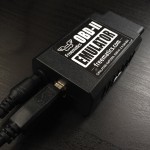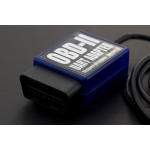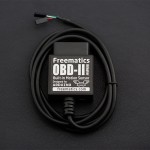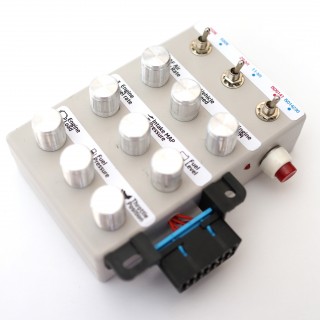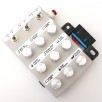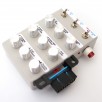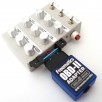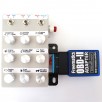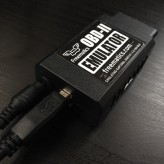Shopping Cart
0 item(s) - US$0.00Freematics OBD-II Emulator MK1
Add to Compare
Freematics OBD-II Emulator is a vehicle OBD-II port emulating device in a 12x8x3cm enclosure with a standard 16-pin female OBD-II port, 9 rotating knobs, 3 switches, a USB port, a DC 12V power input port and a power button. The OBD-II female port is identical to the one in a real car. OBD-II compliant devices plug into the emulator, get powered and work as if plugged into OBD-II port of a real car. The emulator is practically useful and cost effective in OBD-II application development by saving the time and fuel for debugging and testing programs with real cars.
Features
- Emulating OBD-II port identical to one in a real car
- Responding to standard OBD-II PIDs polls and VIN request
- Switching among supported vehicle data bus by physical switches and USB serial terminal
- Value of PIDs controllable by physical knobs
- Providing both power and data for OBD-II compliant devices
Following protocols are supported:
- CAN 500Kbps/11bit
- CAN 250Kbps/11bit
- CAN 500Kbps/29bit
- CAN 250Kbps/29bit
- ISO9141-2
- KWP2000 Fast
- KWP2000 5Kbps
By default following OBD-II PIDs can be controlled through the 9 knobs:
- 0104 - Calculated engine load value
- 010C - Engine RPM
- 010D - Vehicle speed
- 0110 - MAF air flow rate
- 0111 - Throttle position
- 012F - Fuel level input
- 010A - Fuel pressure
- 010B - Intake manifold absolute pressure
- 015E - Engine fuel rate
Besides above OBD-II PIDs, other standard OBD-II PIDs are also accessible with a fixed value. The value of PID 011F (Run time since engine start) changes along with real time. VIN is also accessible.
To change additional OBD-II PIDs, or set DTC (Diagnostic Trouble Codes) and VIN (Vehicle Identification Number), check out the Freematics OBD-II Emulator MK2.
Configuration
Freematics OBD-II emulator can be configured by the 3 switches or USB serial command line interface.
The baudrate of CAN bus protocol simulation can be configured by the 250K/500K switch. The CAN ID switch can toggle between 29-bit and 11-bit CAN ID. The type of KWP2000 protocol (ISO9141-2 or ISO14230) can be altered by the thrid switch.
The simulated protocol can also be altered via the serial command line interface. To do this, connect the emulator to a computer with a USB cable, open serial interface (with any serial terminal program) with baudrate of 115200bps, and then enter one of the following commands followed by character 0x0D (\r).
- CAN_11B_500K
- CAN_29B_500K
- CAN_11B_250K
- CAN_29B_250K
- KWP2000_FAST
- KWP2000_5BPS
- ISO9141_2
Parts List
- Freematics OBD-II Emulator x 1
- USB A-A Cable x 1
- DC 12V/1A Power Adapter (5.5/2.1mm) x 1 (Optional)
Freematics Online Store © 2025

